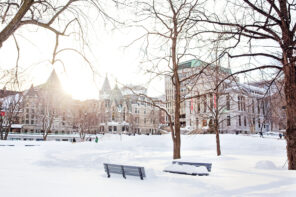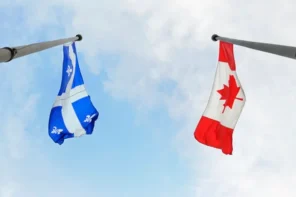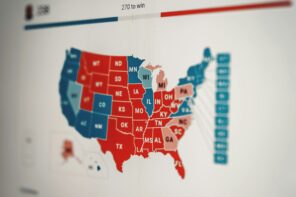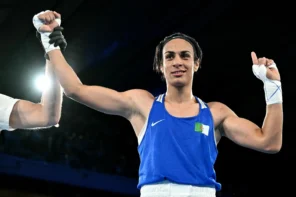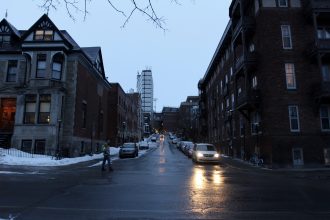As you may know, or perhaps you don’t because of the star-spangled shadow that’s been cast on most political news outlets as of late, Jagmeet Singh won the New Democratic Party (NDP) leadership election in the first round with an overwhelmingly 53.8% majority of the votes against three other candidates—Charlie Angus, Niki Ashton, and Guy Caron—back in early October. Singh is both the youngest leader in the party’s history, at age 38, and the first non-white leader of any major canadian federal party.
Don’t freak out and stop reading if you have no clue what to make of that first paragraph. Many McGill undergrads, especially those in the 27% international student demographic (myself included), are illiterate to the parliamentary debates of their Canadian counterparts.
Mercifully, Kiana Saint-Macary, co-chair of the Young New Democrats of Quebec, sat down with me for an interview. Her NDP expertise, coupled with my own ignoramus questions, have generated a Canadian politics crash course for all you fellow unknowledgables, which will clarify what it means to have Jagmeet Singh as leader of the NDP.
Basic History:
Canada is a multi-party state.
Canadian citizens vote for a single Member of Parliament (MP) representative from their local electoral district, or riding. This MP is affiliated with one of Canada’s political parties. The party that holds the most seats out of 338 in the House of Commons after the federal election forms the majority government for that term, and that party’s leader becomes the Prime Minister of Canada.
There are currently five registered political parties represented in parliament. The Liberal Party won 184 seats in the 2015 federal election and is currently the majority government. The Conservative party, also known as the Official Opposition, has 99 house seats. The NDP party, with its social democratic left-wing ideology, holds 44 seats; the Bloc Quebecois, which pledges Quebec sovereignty, holds 10 seats. Finally, the Green party, which is committed to environmentalism, holds a single seat.
In the height of its political dominance, the NDP lay claim to 103 of the then 308 elected parliament seats.
The NDP emerged in 1963 but remained the muted middle child until it fell under the leadership of Jack Layton—from 2004 to 2011—where it garnered a great deal of support and overtook the Bloc Quebecois and the Liberals to become the Official Opposition for the first time in history. In the height of its political dominance, the NDP lay claim to 103 of the then 308 elected parliament seats.
In an unexpected turn of events, NDP messiah Jack Layton died of cancer in August 2011, and Tom Mulcair was named his successor. Four years later, by the time the 2015 federal elections rolled around, Mulcair, a true party-pooper, had run the NDP into the ground with his unduly moderate political approach, losing 59 seats and the support of many party members. At times, he was accused of being a closet Tory for colluding with the conservatives.
Thankfully, the NDP is the only federal party that mandates a scheduled leadership convention every two years to assess the party leader’s popularity among constituents—also known as a vote of confidence.
Last April, Tom Mulcair lost the vote of confidence with less than 50% in support of his continued leadership and was kicked to the curb. A new leadership election took place in October, and Jagmeet Singh was the clear winner among the four candidates.
NDP Today:
The question now is whether Jagmeet Singh can champion the NDP party back into the constituents’ good graces. His biggest disadvantages include notholding a seat in the House of Commons, the media likening him to a Trudeau-wannabe, and not being popular in Quebec.
Saint-Macary, our resident NDP authority here, voted for Niki Ashton instead of Jagmeet Singh as party leader. She explained that Ashton’s policies were “unabashedly progressive”. Saint-Macary added, “I just felt that Ashton was more proactive on the issues;[…] [Singh] definitely felt he had to wait to be more in tune with the field in federal politics”.
With time, however, he has warmed the hearts of NDP members.“In the end he had some really cool ideas, he wants to get rid of long term solitary confinement and he has a lot of good judicial policies because he used to be a criminal lawyer,” said Saint-Macary.
And lest we forget, he is proposing free tuition, y’all.
Singh marks himself distinctive from the liberal leader with appeals to the working class and a platform that is attentive to precarious employment and electoral reform.
Aware that the media is branding him as the NDP’s lampoonist version of sexy Trudeau, Singh marks himself distinctive from the liberal leader with appeals to the working class and a platform that is attentive to precarious employment and electoral reform. In an interview with Global News, Singh said, “I don’t think [Trudeau] understands, on the same level, the struggles that people face right now in Canada,[…] I’ve had a glimpse of the struggles […] it gives me a passion and an appreciation he doesn’t have.”
No doubt, the NDP party is hoping that Singh will mobilize lower class workers, immigrants, and minorities to the voting booths, and so far he has managed to galvanize 47,000 new NDP members—an unprecedented number this early in the race. He is a representative of the people that truly represents the people.
But, his representation, or presentation should I say, may also regrettably prove to be the millstone around the neck of his campaign.
In 2012, Elisabeth Gidengil, a McGill Political Science professor, stated that “religious affiliation has, for many years, been one of the best predictors of vote choice.” A 2011 religious demographic census shows that 39% of the population identifies as Roman Catholic, 28% as Other Christian and only 1.4% as Sikh, Singh’s religious affiliation. It is possible that this culture of religio-political Christian affiliation that dates back to confederacy will overshadow Singh’s strong social-democratic values.
Sadly, Christian voters are not even Singh’s principle worry. Irreligious Quebecers have frequently declared their discomfort with having a practicing Sikh as their leader. Quebec MP Pierre Nantel told a journalist at the NDP party’s regional caucus meeting, “We don’t want to see any ostentatious religious symbols. We think that is not compatible with power, with authority.”
Singh, aside from sporting colorful turbans, always dons the five K’s according to Sikh creed; uncut hair (kesh), a steel bracelet (kara), a sword (kirpan), a wooden comb (kanga), and cotton underwear (kachhehra).
Unsurprisingly, Singh objected to Quebec’s recently adopted Bill 62, otherwise called the Burqa Ban, which prevents citizens from obtaining certain public services unless they uncover their face. Openly exhibiting his faith and opposing this bill is losing a lot of popularity points for him in Quebec.
In order for the NDP to win the federal election, “I think we need Quebec. The reason we had the orange wave in 2011 was because of Quebec,” says Saint-Macary.
Luckily, Singh has a card up his sleeve that can combat the suspicion of secularist citizens—his charisma.
“Whenever he comes to Quebec the reception is really good. It’s about […] separating the image that some Quebecers might have with what his values are and how in line they are with progressive Quebec values,” said Saint-Macary.
Nonetheless, while campaigning for a by-election in Lac-Saint-Jean recently, Singh showed quasi-support of Quebec sovereignty, or at least promising to respect the decision should it come to pass. The byelection results last Monday, however, were disappointing for the NDPs, snagging only 11.7% of the votes. If secession confessions can’t even sway the Quebec voters, Singh’s charisma better be magnetic enough to make them want to stay.
Luckily, Singh has a card up his sleeve that can combat the suspicion of secularist citizens—his charisma.
Whether Singh will succeed in uniting the immigrants, workers, religious, secular, and separatists of the nation to win the Federal Election in 2019 with “Love and Courage” is a question of time. If anything, you should have acquired some new debate points for the next time you encounter a Jagmeet name drop.
But if you are still completely overwhelmed, I’ll leave you with some final ammunition that guarantees you will end any debate coming out on top:
It’s actually pronounced “Jug-meet”.







